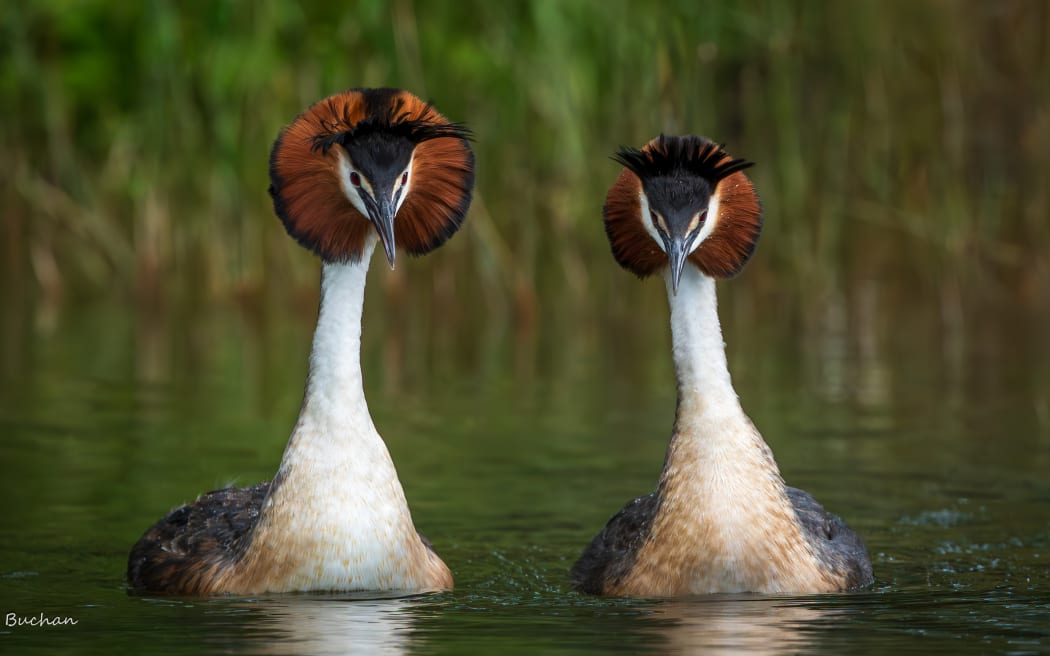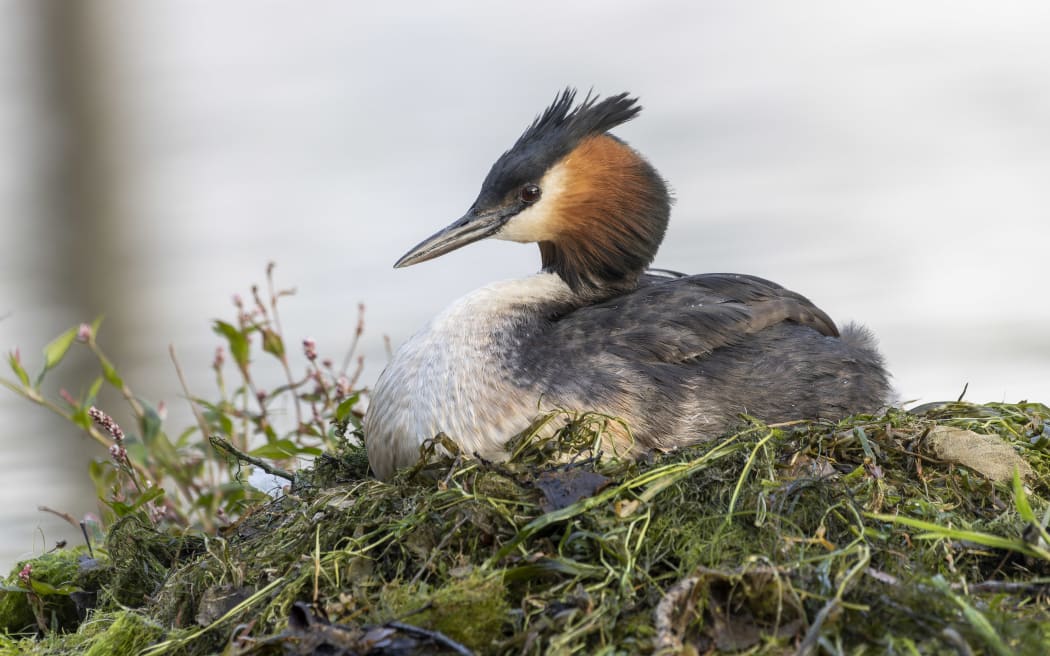
A pair of pūteketeke Australasian crested grebe. Photo: Supplied / Leanne Buchan Photography
New Zealand's Bird of the Century is the pūteketeke but chances are, especially if you live in the north, you've never heard of it other than that John Oliver is a massive fan.
RNZ is here to explain further.
What is a pūteketeke?
With its burnt orange mullet, striking plumage and propensity for puking, the pūteketeke is classified as 'nationally vulnerable'.
It is a lake bird, though it is more closely related to albatrosses and penguins than to ducks, and it can't walk on land.
What does it sounds like?
In true RNZ fashion, in 2014, we published a recording of pūteketeke. Listen here.
How many are left?
In the 1980s, the pūteketeke population dropped to 200.
In 2012, there was just one breeding pair in Wānaka.
The pūteketeke is extinct in the North Island and there are now an estimated 1000 birds in the South Island.
The combined population across Aotearoa and Australia is believed to be less than 3000.
What efforts have gone into saving the pūteketeke?
Retired zoologist John Darby has played a key role in the conservation of pūteketeke, having worked for the last ten years to help save the population in Wānaka.
When Forest and Bird announced the pūteketeke had won Bird of the Century, they gave Darby a shout out for his efforts.
Darby told RNZ's Nine to Noon he was jubilant about the news.
"I went down to the grebes earlier this morning to check on them and it was very clear they had been drinking all night, there was still a few pub fights going on and the mallards down there are feeling decidedly uncomfortable."

A pūteketeke Australasian crested grebe on a nest at Te Anau. Photo: Supplied / Oscar Thomas
Darby was key in establishing the Lake Wānaka Grebe Project in 2013.
A single bird on the lake ignited his curiosity as he watched it fail in its attempt to make a nest. A survey of the lake at the time counted four birds.
The lake's water levels rising and falling seemed to be part of the problem.
So Darby started to make floating nesting platforms and by the middle of the following winter seven pairs of pūteketeke showed up at the marina and began to breed.
Mt Aspiring College students helped to build some of the early platforms.
The birds are "a lot more complicated than anything else I've ever worked with", Darby said.
"A really quite extraordinary challenge to get them going and work out how we can do what we have been able to do.
"We've now fledged over 520 chicks from the marina area in Wānaka so it's moderately successful but still some way to go.
"The boaties and the fishermen are saying 'Oh the little buggers are everywhere'. They really are spreading."
How did it become Bird of the Century?
Each year Forest and Bird holds a Bird of the Year contest. This year the stakes were lifted and birds were in to be crowned the century's best.
Pūteketeke won with 290,374 of the total votes. It was far ahead of the second place winner Northland Island brown kiwi with 12,904 votes.
The competition didn't come without drama and international interference. And with 45 votes under the name John Oliver, it was clear there was one man in particular who managed to sway voters for his favourite.

